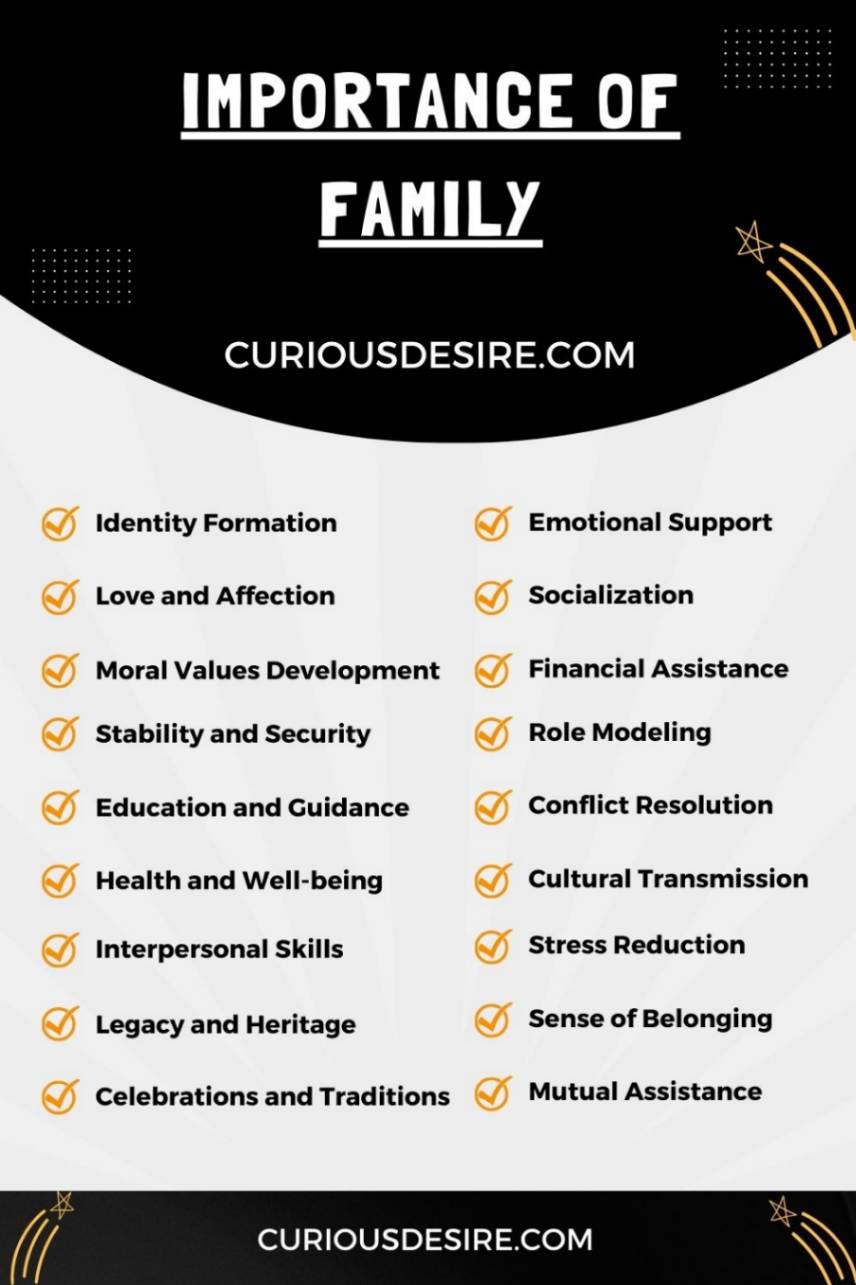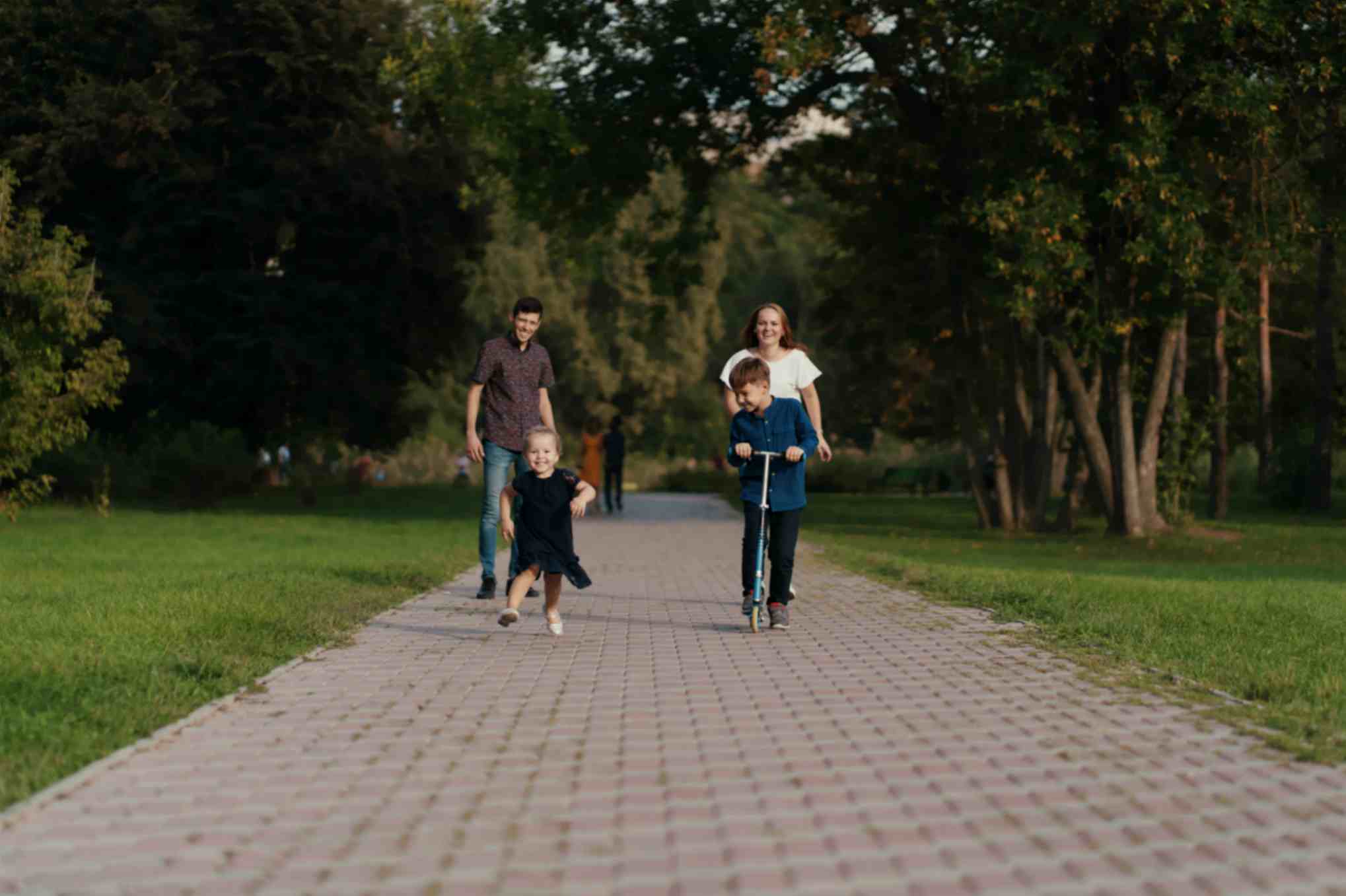2. Identity Formation
Identity formation within a family is like discovering the unique puzzle pieces that make you, “You”. Family members play an important role in shaping your sense of self.
For instance, if you have a sibling who’s passionate about art, it might spark your interest in creativity. Through shared experiences and discussions, family helps you understand your strengths, weaknesses, and passions.
Just like a tree’s roots provide stability, a strong family foundation supports the growth of your identity.
3. Socialization
Socialization in a family is like a mini-society where you learn the ropes of interacting with others. From the dinner table to family outings, these settings teach you how to communicate, cooperate, and handle relationships.
For example, negotiating with siblings over game choices or learning to take turns during family activities builds essential social skills.
These everyday interactions within the family become the training ground for successfully engaging with the broader world.
4. Love and Affection
Love and affection within a family are like the heartbeats that keep everyone emotionally connected. Whether it’s a warm hug, a shared laugh, or a simple “I love you,” these gestures create a nurturing environment.
Consider the times when a family member showed love by helping with homework or cheering you on at a school event.
These moments of affection contribute to a sense of security and belonging, forming the emotional glue that binds the family together.
5. Moral and Values Development
Moral and values development within a family is like a compass guiding you through life’s ethical terrain. Family is where you first encounter concepts of right and wrong, fairness, and kindness.
For instance, if your family emphasizes the importance of honesty, you’re likely to carry this value into your interactions outside the home.
Shared family values create a moral foundation, influencing decision-making and character development as you explore the wider world.
6. Stability and Security
Having stability and security in a family is like having a strong foundation that keeps everything steady in life’s unpredictable journey. Your family is like a dependable anchor that gives you a sense of ongoing comfort and confidence.
Imagine it as the solid ground beneath your feet, making sure that no matter what problems come your way, you always have a safe place to come back to.
It’s like having a routine that stays the same and the comforting feeling of having your family around when things are tough. This stability creates a feeling of safety that stays with you throughout your life.
7. Financial Assistance
Financial assistance within a family is like a shared safety net during financial ups and downs. Families often rally together to support each other when it comes to financial challenges.
For instance, if one family member faces unexpected expenses, others may contribute to ease the burden.
This mutual assistance helps alleviate financial stress and reinforces the idea that the family is a collective unit, ready to step in when needed.
8. Education and Guidance
Education and guidance within a family are like a compass, helping navigate the journey of life. Family members, especially parents, play a vital role in providing advice, sharing experiences, and guiding decisions.
Imagine a parent helping with homework or offering insights into life choices based on their own experiences.
This educational support not only aids in the academic journey but also imparts valuable life lessons, shaping the path toward personal and professional growth.
9. Health and Well-being
Health and well-being within a family are like a team effort to ensure everyone’s physical and mental welfare. From encouraging a balanced diet to promoting regular exercise, family plays an important role in maintaining a healthy lifestyle.
Picture a family walk in the neighborhood or a shared home-cooked meal highlighting nutritious choices. By prioritizing each other’s well-being, families contribute to a collective sense of vitality and resilience.
10. Role Modeling
Role modeling within a family is like a live demonstration of values, behaviors, and attitudes. Family members, particularly parents, serve as the primary role models for children.
For instance, observing a parent’s work ethic or kindness towards others becomes a blueprint for behavior.
These role models shape the values and aspirations of family members, influencing how they approach relationships, work, and various aspects of life.
11. Interpersonal Skills Development
Interpersonal skills development within a family is like a hands-on workshop for effective communication and relationship building.
Engaging in conversations, sharing responsibilities, and resolving conflicts collectively serve as practical exercises.
For example, participating in a family discussion about chores or planning an outing together hones interpersonal skills, teaching the importance of listening, empathy, and collaboration.
These skills cultivated within the family unit extend into various aspects of life, enhancing social interactions beyond the home.
12. Conflict Resolution
Conflict resolution within a family is like learning to handle stormy waters together.
Disagreements are natural, and the family provides a safe space to develop healthy conflict-resolution skills. Imagine a disagreement over household rules – finding compromises and understanding differing perspectives becomes a valuable lesson.
By addressing conflicts constructively, families promote an environment where members feel heard and supported, laying the foundation for handling disagreements in other relationships.
13. Cultural Transmission
Cultural transmission within a family is like passing down a unique family storybook through generations. Families play a vital role in preserving and sharing cultural values, traditions, and customs.
For example, celebrating cultural festivals or sharing family stories helps maintain a connection to heritage.
This transmission of culture within the family not only enriches family identity but also contributes to the broader cultural tapestry.
14. Celebrations and Traditions
Celebrations and traditions within a family are like threads weaving a colorful tapestry of shared memories and joyous moments.
Whether it’s a birthday party, holiday festivities, or annual family traditions, these occasions strengthen familial bonds. Consider the warmth of gathering for a holiday meal or the excitement of a family game night.
Establishing and maintaining traditions create a sense of continuity and belonging, providing a framework for shared experiences that last a lifetime.
15. Legacy and Heritage
Think of legacy and heritage in a family like the roots that hold up a family tree, linking the past, present, and future. It’s all about the stories, values, and traditions that make up a family’s history.
For example, hearing tales of grandparents’ adventures or understanding the origins of family customs can make you feel proud and connected.
When families keep and share these stories and traditions, it’s like passing on a shared history. This helps shape who we are and where we come from, influencing the identity of the people who will come after us.




